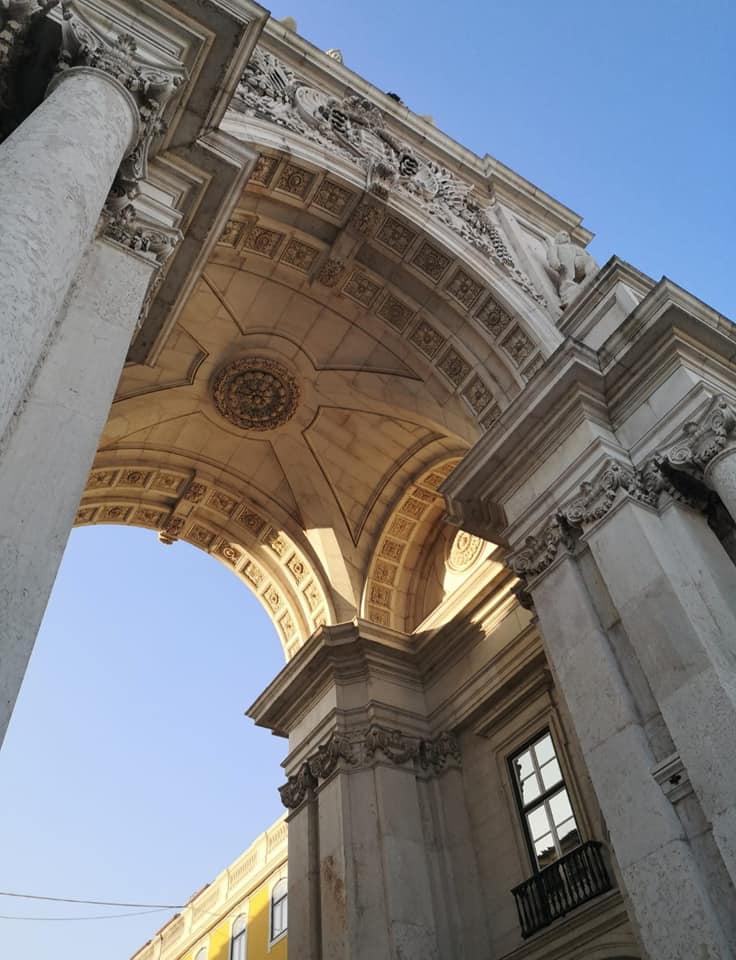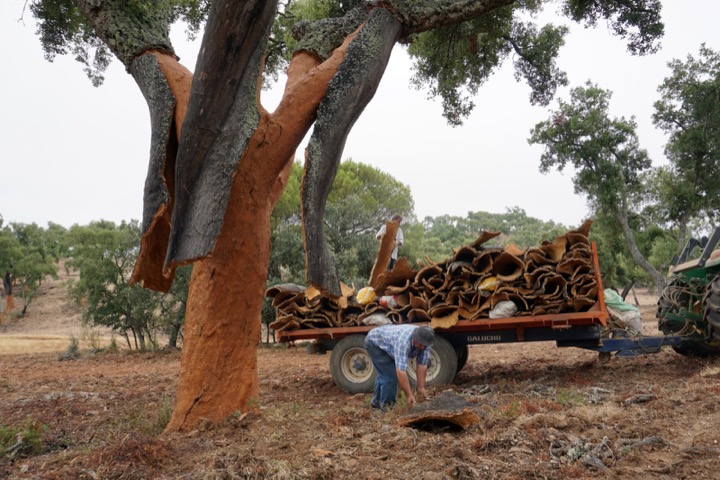In southern Portugal, in the beautiful Alentejo region, rests the exciting and enchanting city of Evora, surrounded by fortified walls. Evora is a UNESCO Heritage World Site and is intertwined with a long and interesting history. In the medieval age, Evora was the center of education and art. Then a period of darkness occurred, but today Evora is again a thriving city and a center for students and culture. The city has a lot of historical monuments and sights worth visiting. Join us on a trip along the historic streets of Evora and explore the best sites.
Read on to find out about the top 10 things to do while here in Evora, Portugal:
1. Capela dos Ossos - Chapel of Bones

Capela dos Ossos is a remarkable chapel with a mysterious atmosphere. The chapel is one of the most visited sights in Evora, for its spooky history as it is the final place of rest for hundreds of bodies, exhumed from Evora’s graveyards. The chapel is more than a religious curiosity. In the 16th century, the graveyards of Evora were so overcrowded, that the construction of the chapel was necessary. Bones were put into the cement and housed in this chapel as a place of worship. While today we might see building a chapel filled with bones as very creepy, at the time it was aligned with the beliefs of the age and people explained it by saying that, in the chapel, the deceased would be closer to God.
Capela dos Ossos - Chapel of Bones
Address: Praça 1º de Maio 4, 7000-650 Évora, Portugal
Website: Capela dos Ossos - Chapel of Bones
2. Igreja de São Francisco - São Francisco Church and Convent

The Igreja de São Francisco is a Gothic church, built between 1475 and 1550. The architect Martim Lourenço designed the church, and it replaced a former Romanesque church, from the early 13th century. The arcade is constructed in seven arches, with different forms illustrating a blend of Gothic style with Moorish elements. The facade is richly decorated and very detailed and the church is one of the largest and, of course, one of the most important, in Evora. Besides, there is the chapel of bones in this church, so you can visit two monuments at the same time.
Igreja de São Francisco - São Francisco Church and Convent
Address: Praça 1º de Maio, 7000-650 São Pedro, Évora, Portugal
Website: Igreja de São Francisco - São Francisco Church and Convent (in Portugese)
3. Sé de Evora - Cathedral of Évora

The Cathedral of Evora is one of the oldest and most important monuments in Evora. This ancient religious seat lies at the highest point of the city and nowadays operates as the seat of the Archdiocese of Evora. The Cathedral was named a UNESCO World Heritage Site in 1988 and the earliest parts of the building date back to the 12th century. One significant element that is sure to impress is the main rose granite facade, which consists of the entrance, adorned with a Gothic window. In the 16th century, there were two great towers added to this cathedral. Each tower is decorated differently. There is also a museum, which features some of the riches of the medieval building.
Cathedral of Évora
Address: Largo do Marquês de Marialva, 7000 Évora, Portugal
4. Royal Palace of Evora

The Royal Palace of Evora is also called the Royal Palace of São Francisco and the Palace of King Manuel I. The palace used to be a Royal residence for the former kings of Portugal and was originally built during the 13th century, as a convent. During the 14th century, the royal family started to use it as a seat when they were centered in Alentejo, but it became a royal palace during the reign of King Alfonso. The palace overcame war, decay and redevelopment and most of the original building is not seen here, anymore. During the reign of King Manuel, I, this palace was the center of the Renaissance and was visited by playwrights, such as Gil Vincente and explorers like Vasco de Gama.
Royal Palace of Évora
Address: Rua 24 de Julho 1, 7000-650 Évora, Portugal
Evora Tour Guide
Marta Côrte Real
I was born in Lisbon and I'm forever in love with it! After my family, guiding is my greatest passion: I love what I do! I have a 5 year degree called Touristic Information, specifically to work as a Tourist Guide, as well as the Certificate of Competence acquired through a qualifying examination, in order to be able to exercise this regulated profession. I own and manage a tour company licensed by the Turismo de Portugal IP, Portugal's National Tourism Authority. Tour guiding has been my full time job since 2003 and it has always been incredibly rewarding. In 2021, I was recognized by the Wanderlust Awards as one of the world's "Best Specialist Guides", which I think is a result of doing what I love every day. Waking up knowing I'll meet enthusiastic people who are excited to discover my city makes me a very grateful and happy person. For almost two decades (how am I that old already?!) I travelled around the world as a tour guide and tour manager in Portugal, Europe, South and Central America. I stopped being so nomadic when my first child was born and in 2016, I became part of ToursByLocals' amazing team and since then I've been 100% dedicated to my lovely Lisbon and its surroundings. I am a mother of 3. I love planning family trips. I know how important it is to create special family memories. Travelling means getting to know new places and cultures, experiencing nature more closely, walking and playing more, discovering history through cities, monuments and palaces! Our childhood travel memories are often the sweetest and along with other remarkable moments, we build who we are and how we live in the world. So if you're in need of someone to guide you and your kids and have them thrilled about travelling, I'm your guide! I'm also very fond of small groups of friends, extended family trips and solo travellers. It's a much more personal approach and very interesting and grateful, too. It's so lovely to get to know you! My wish is to make you feel all the unique details of this fairytale country the way I proudly do, welcoming you as a friend, however always assuring professional, original and interesting tours. I offer walking tours or if you prefer to just sit and relax, I also provide tours with transportation included (private minivan, minibus, bus). You can choose from my many tours the one you're most interested in, or we can build together a tailored experience, everything at your pace. Once you send me a message, I'll try to answer right away, but if I'm delivering a tour or busy with my family, I'll let you know that I'll get back to you soon. I'll be happy to create a customized tour just for you and if you have a special request, if it's a family with different age ranges. . . let me know so we can build the best option for your group. Some of my tours can perfectly be combined. I can also help you plan the best timings to avoid the crowds and even buy your tickets, if needed. There are lots of magic places in Portugal: let me know about you, your interests and ideas and according to that I will work on your time here! The most recent experience has been incredible: the virtual tours. The idea came up with the 2020 pandemic scenery and I decided to keep them going in the future as they're such a pleasant way of travelling differently and sustainably. These tours are perfect to gather families and friends who live away from each other and for schools to complement their teaching, as well as to help those who cannot travel for many reasons, to be able to see the world. I believe we always need to make the best out of the worst. Portugal is a country to visit all year round: weather is wonderful and even during the winter you can enjoy the simple pleasures of life like sitting on an esplanade, absorbing each sunbeam! Plus, I love cooking and baking and I'm happy to share my recipes. Portuguese food is simply delicious and the wine is just perfect for a toast to celebrate life! Get ready to deeply fall in love with Portugal! Can't wait to meet you!
Tours by Marta
5. Museu de Evora

The Museu de Evora is one of the most famous landmarks of Evora and was renovated in 2009. The museum features collections and an exhibition about Evora, as well as the rest of the world. The museum was originally founded in 1915 when Dr. Augusti Filipe Simoes started to exhibit pieces from Evora Public Library. The collection features Roman, Visigothic and Arabian pieces. The most important works of the museum are set in 13 parts, which represent the Life of the Virgin and six small panels that represent the Passion of Christ. Besides all this, there are paintings by renowned artists, such as Francisco Henriques, Mestre do Sardoal, Overall Rebelo, and others.
Museu de Évora
Address: Largo do Conde de Vila Flor, 7000-804 Évora, Portugal
Website: Museu de Évora
6. Convento da Cartuxa

The Convento da Cartuxa is also known as the Convent of Santa Maria Scala Coeli and is a holy monastery, located in the parish of Bacelo. The large monastery is the first of the Carthusian order that was built in Portugal and was founded in 1857, by the Archbishop of Evora, Teotónio of Braganza. The building stands next to the Aqueduct of Silver Water and is conspicuous for its beautiful marble and Renaissance facade, designed by architects Felipe Terzi and Giovanni Vincenzo Casali. The interior features monastic stalls and a carved altar. The impressive cloister is the largest in Portugal.
Convento da Cartuxa
Address: Quinta do Bacelo, Evora 7005-198, Portugal
Website: Convento da Cartuxa (in Portugese)
7. Jardim Público de Évora

Evora Public Park is a beautiful garden and park, where you can find vegetation of all colors in a peaceful and tranquil environment. It invites you to stroll deep into the calm ambiance and connect with nature. It is also a space filled with history and linked to the past and also famous for its architecture. There are a couple of landmarks inside the garden, including the remains of a medieval wall of D. Manuel Palace or the Ruínas Fingidas.
Evora Public Park was built by the municipality between 1863 and 1867 and is about 8.2 acres (3.3 hectares). It features a deep concentration of trees and species brought from other places. You can relax around the colorful flowerbeds and small lakes.
Jardim Público de Évora
Address: Praca 1º de Maio, Évora 7000-650, Portugal
8. Aqueduto da Agua de Prata

Aqueduto da Agua de Prata is one of the Iberian Peninsula’s greatest projects, built in the 16th century. The aqueduct provided clean drinking water to Evora. The aqueduct connected the city to the nearest source of the flowing river.
Aqueduto da Agua de Prata
Address: R. do Muro 8, 7000-592 Évora, Portugal
9. Igreja Sao Joao Evangelista
Igreja Sao Joao Evangelista is the church of a 15th-century convent. The church was founded in 1485, by Count Rodrigo Melo, by order of King João II. It was built over the ruins of a former Arabian castle, which was destroyed by fire in a revolution. In 1834, the church was closed by royal order and it reopened, in 1965.
Igreja Sao Joao Evangelista
Address: Rua Augusto Simoes Francisco, 7000 Évora, Portugal
10. Roman Temple of Évora

The Roman Temple of Evora is also known as the Templo de Diana. It is an ancient temple situated in the historic center of Evora and it is believed it was constructed in the 1st century, in honor of Augustus. The temple was classified a UNESCO World Heritage Site and it is one of the most important landmarks of the city, representing the Roman and Lusitanian civilization of Evora.
Roman Temple of Évora
Address: Largo do Conde de Vila Flor, 7000-863 Évora, Portugal
Alentejo's gem
Evora is only one of the many jewels you can visit in Alentejo. It’s an extremely well-preserved city, in terms of its history and culture, and you’ll leave wanting more. So what are you waiting for? Visit Evora to discover the beauty of Portugal and the medieval age!
History
Get Trip101 in your inbox
Unsubscribe in one click. See our Privacy Policy for more information on how we use your data








%20-%20Marta%20C%C3%B4rte-Real%20F4LWM.jpg)











Create an account to